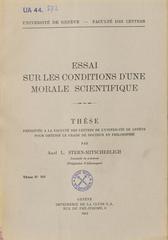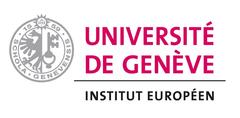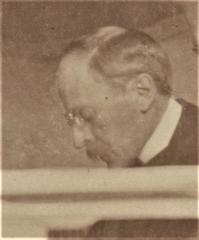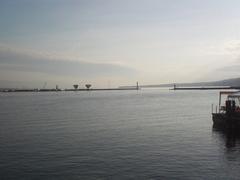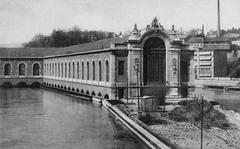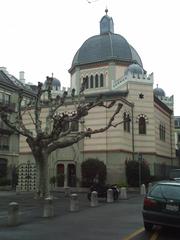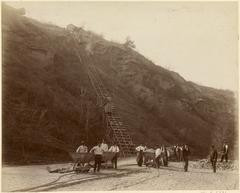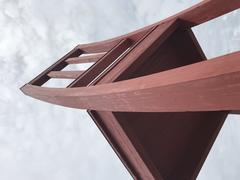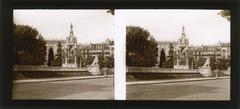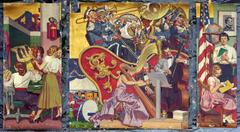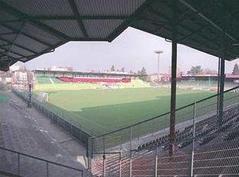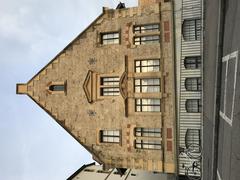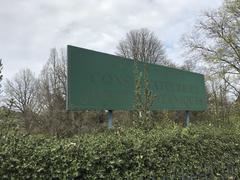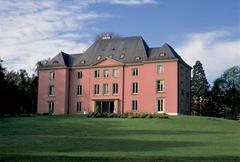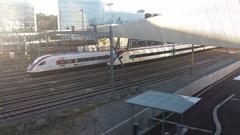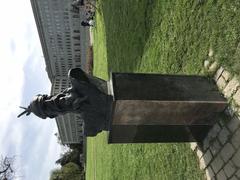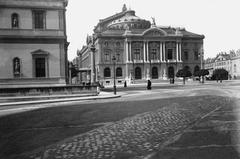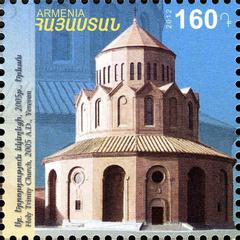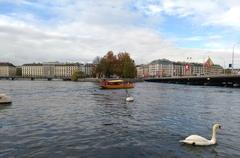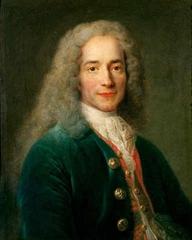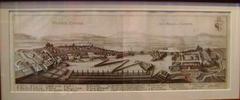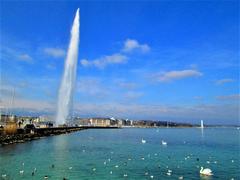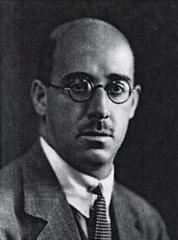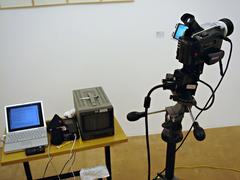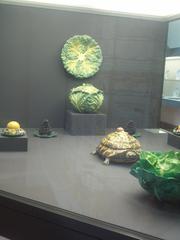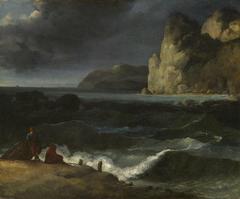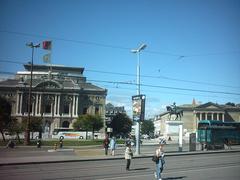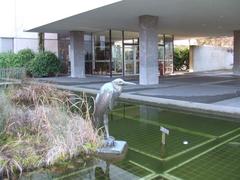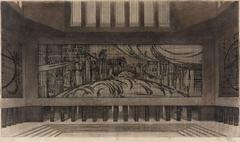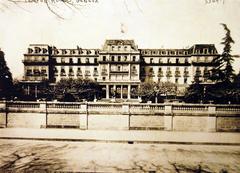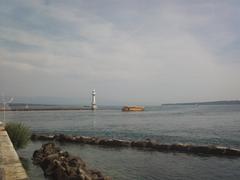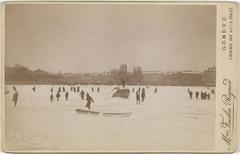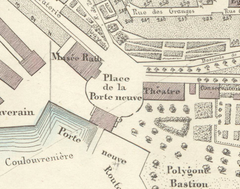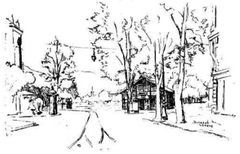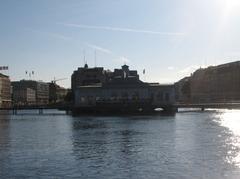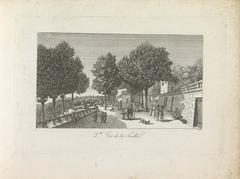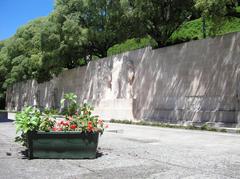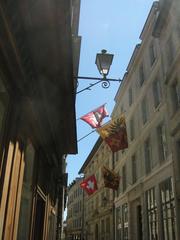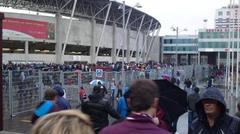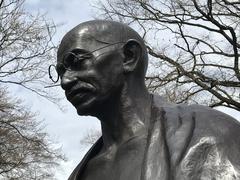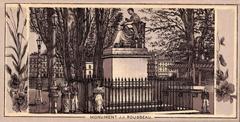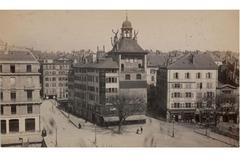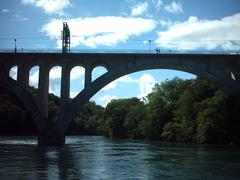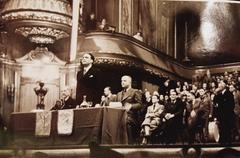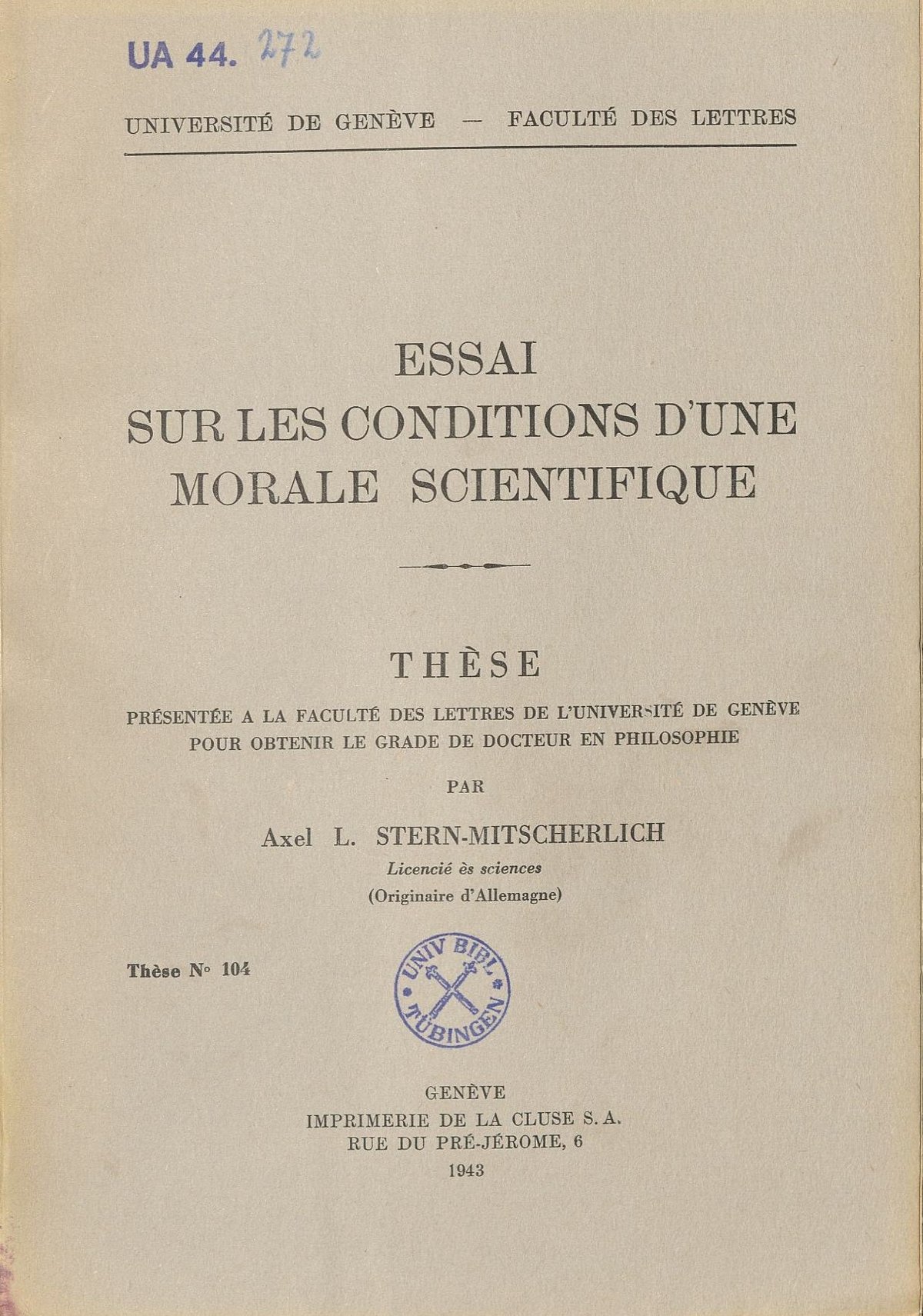
University of Geneva Visiting Hours, Tickets, and Guide to Historical Sites in Geneva
Date: 14/06/2025
Introduction to the University of Geneva and Its Significance
In the heart of Geneva, the University of Geneva (Université de Genève, UNIGE) stands as a symbol of academic excellence, historical depth, and cultural vibrancy. Founded in 1559 by John Calvin as a theological academy, UNIGE has transformed into a multidisciplinary institution recognized globally for its research, innovation, and international collaborations. As a visitor, you have the opportunity to explore not only a leading educational center but also a campus interwoven with Geneva’s rich urban fabric and storied past.
The university is closely linked with landmarks such as the Uni Bastions building in Parc des Bastions and the celebrated Reformation Wall, which honors Geneva’s pivotal role in the Protestant Reformation. Its central location provides easy access to the Old Town, St. Pierre Cathedral, and international organizations like the United Nations and CERN.
This guide delivers comprehensive insights into the university’s origins, academic structure, and practical visitor information. Whether you’re a prospective student, history enthusiast, or cultural traveler, you will find everything needed for a rewarding visit to UNIGE and its surrounding attractions.
For official details, visit the University of Geneva’s visitor page (unige.ch/en/visit) and Geneva’s tourism site (geneve.com).
Table of Contents
- Introduction
- History of the University of Geneva
- Academic Structure and Research
- Visiting the University of Geneva: Practical Information
- Architectural Highlights
- Integration with Geneva’s Cultural and Intellectual Life
- University of Geneva Monument
- University of Geneva Campus Guide
- The Reformation Wall in Geneva
- Summary and Visitor Tips
- References
History of the University of Geneva
Founding and Early Development (16th–17th Centuries)
The University of Geneva was established in 1559 by John Calvin as the Académie de Genève, initially serving as a theological seminary dedicated to training pastors for the reformed city-state. By 1565, law was incorporated, setting the stage for the expansion into a multidisciplinary institution. This period is closely tied to Geneva’s emergence as a center of Protestant thought in Europe.
Enlightenment and Secularization (17th–19th Centuries)
As the Enlightenment swept across Europe, the university broadened its curriculum to include philosophy, literature, and the natural sciences. In 1873, the institution transitioned to a secular university, adding the Faculty of Medicine and diversifying its academic offerings.
Expansion and Internationalization (20th Century–Present)
During the 20th century, UNIGE expanded its faculties and research centers and established strong partnerships with global organizations such as the United Nations and CERN. Today, nearly 40% of its students hail from over 150 countries, reflecting the university’s international character.
Academic Structure and Research
UNIGE currently comprises nine faculties, including sciences, medicine, humanities, social sciences, and law, among others. Thirteen interfaculty centers foster interdisciplinary research, with internationally recognized achievements in fields such as molecular biology, particle physics, and environmental sciences. The university consistently ranks high in global university listings.
Visiting the University of Geneva: Practical Information
Campus Tours and Visitor Information
Guided tours are available during the academic year, offering insights into the university’s historic buildings, research facilities, and vibrant student community. Uni Bastions, located within Parc des Bastions, is a highlight, featuring the Faculty of Arts, Protestant Theology, and the iconic Reformation Wall.
Visiting Hours and Accessibility
- University Buildings: Open weekdays, 8:00 AM–6:00 PM.
- Parc des Bastions: Open daily from dawn until dusk.
- Accessibility: Ramps, elevators, and accessible pathways are available across the campus for visitors with reduced mobility.
Tickets and Entry
- Admission: Free to university grounds, parks, and most buildings.
- Special Exhibitions/Events: May require tickets; check the official website for details and bookings.
Nearby Attractions
The university’s main campuses in Geneva and Carouge are easily accessible by public transport. Nearby attractions include the Old Town, Geneva Botanical Gardens, United Nations headquarters, and CERN. Combining a university visit with these sites offers a comprehensive Geneva experience.
Architectural Highlights
- Uni Bastions: Built between 1868–1871, this neoclassical building anchors the campus within Parc des Bastions.
- Reformation Wall: This monumental structure honors Geneva’s role in the Protestant Reformation.
- Uni Dufour, Uni Mail, and CMU: These buildings showcase a blend of historic and modern architecture, reflecting the university’s evolution.
Integration with Geneva’s Cultural and Intellectual Life
UNIGE is a central force in Geneva’s cultural landscape, fostering international dialogue and innovation. Partnerships with global organizations and active participation in European research networks highlight the university’s role as a hub for intellectual exchange.
University of Geneva Monument
Historical Significance
The University of Geneva Monument commemorates founder Jean Calvin and the institution’s pivotal role in Geneva’s intellectual and cultural development since 1559. It stands as a tribute to the university’s legacy in education and international cooperation.
Visiting Hours and Tickets
- Open Daily: 9:00 AM–6:00 PM (closed on Dec 25, Jan 1, and Aug 1).
- Guided Tours: Available weekends at 11:00 AM and 3:00 PM (CHF 10, prior booking required).
- Admission: Free for all visitors.
Accessibility and Getting There
- Location: Near the central campus; accessible by tram lines 12 and 18 (“Université” stop).
- Mobility: Ramps and tactile paths are available for visitors with reduced mobility.
Nearby Attractions
- St. Pierre Cathedral (10-minute walk)
- International Red Cross and Red Crescent Museum (15-minute walk)
- Parc des Bastions and the Reformation Wall (5-minute walk)
Visitor Tips
- Engraved inscriptions highlight the university’s founding principles.
- Photography is allowed; flash discouraged.
- Multilingual brochures and audio guides available at the visitor center.
University of Geneva Campus Guide
Campus Layout
The campus is integrated into Geneva’s cityscape, comprising multiple buildings, parks, and monuments. Most sites are open to the public and easily accessible via public transport (UNIGE Science Innovation Hub).
Key Sites
- Parc des Bastions & Reformation Wall: Home to the 100-meter Reformation Wall, honoring Reformation leaders (World History Edu). The park is open 7:00 AM–9:00 PM.
- Uni Bastions: Houses the Faculties of Arts and Theology, plus the main university library. Open 8:00 AM–6:00 PM (campus life page).
- Uni Dufour: Administrative center, lecture halls, and a rooftop terrace with panoramic views.
- Science Innovation Hub (Quai Ernest-Ansermet): Modern research and innovation center. Open weekdays 9:00 AM–5:00 PM (UNIGE Science Innovation Hub).
- Uni Mail: The largest building, hosting Law, Economics, Social Sciences, and Psychology faculties.
- Medical Campus (CMU): Focused on medical education and research.
Accessibility
The campus is pedestrian-friendly, with clear signage, ramps, elevators, and accessible restrooms. Public transport is efficient, and visitors staying in Geneva accommodations often receive a free Geneva Transport Card (Geneva.info). Metered parking is available near key sites.
Campus Life and Events
UNIGE hosts cultural events, concerts, film screenings, and public lectures year-round. The Vie de campus program welcomes visitors to participate in campus life.
Nearby Historical Attractions
- St. Pierre Cathedral: 5-minute walk, climb for city views (Out of Office Mindset).
- Old Town: Explore medieval streets and heritage sites (Geneve.com).
- Lake Geneva: Lakeside promenades and boat tours (My Global Viewpoint).
Visitor FAQs
- Visiting Hours: Weekdays 8:00 AM–6:00 PM; Parc des Bastions dawn to dusk.
- Entrance Fee: Free to campus, parks, and monuments.
- Getting Around: Walkable campus; public transport available.
- Guided Tours: Offered periodically (UNIGE events calendar).
- Accessibility: Most buildings are accessible; contact for specific needs.
Practical Tips
- Best Times: Spring and autumn for mild weather (Destination Abroad).
- What to Bring: Comfortable shoes and weather-appropriate clothing.
- Plan Ahead: Review the university’s calendar for events and closures.
Multimedia and Maps
Interactive maps and virtual tours are available on the official UNIGE website.
Visiting the Reformation Wall in Geneva
History and Significance
The Reformation Wall (Mur de la Réformation), inaugurated in 1909, commemorates leaders of the Protestant Reformation such as John Calvin, William Farel, Theodore Beza, and John Knox. Its statues and bas-reliefs reflect Geneva’s role in the movement for religious reform and intellectual freedom.
Visiting Information
- Location: Parc des Bastions, adjacent to Uni Bastions.
- Hours: Open-air and accessible year-round during park hours (dawn to dusk).
- Admission: Free.
- Guided Tours: Included in many city tours; self-guided exploration is easy with onsite information.
Practical Tips
- Getting There: Tram lines 12 or 15 to “Uni Bastions”.
- Accessibility: Wheelchair accessible.
- Best Time: Spring and autumn for pleasant weather.
- Nearby Amenities: Cafés and restrooms near the park.
Nearby Attractions
- Parc des Bastions: Chess tables, statues, and green spaces.
- Old Town: Historic streets and St. Pierre Cathedral.
- Lake Geneva: Scenic walks and boat rides.
- International District: United Nations headquarters and Red Cross Museum.
FAQs
- Entrance Fee: No; the monument is in a public park.
- Guided Tours: Included in some city tours; otherwise self-guided.
- Accessibility: Wheelchair accessible.
- Events: Occasional commemorations; check Geneva tourism for updates.
Multimedia
Official images and virtual tours are available via Geneva Tourism.
Summary and Visitor Tips
The University of Geneva combines academic stature with historical and cultural richness, making it a compelling destination. Visitors can explore its origins, enjoy guided tours of historic buildings, stroll through Parc des Bastions, and admire the Reformation Wall. The campus is accessible and welcoming, with free entry to most sites and excellent transport links. Nearby, Geneva’s Old Town, St. Pierre Cathedral, and international institutions offer even more opportunities to engage with the city’s heritage.
For up-to-date visitor information and bookings, consult the official University of Geneva visitor page and Geneva tourism site.
References
- University of Geneva: A Historical and Visitor’s Guide to Geneva’s Premier Educational Site, 2025, University of Geneva (http://unige.ch/en/visit)
- Visiting the University of Geneva Monument: History, Hours, Tickets, and Visitor Information, 2025, Geneva Tourism (https://www.geneve.com)
- University of Geneva Campus Guide: Visiting Hours, Key Sites & Nearby Geneva Historical Attractions, 2025, University of Geneva (https://www.unige.ch/sih/visit)
- Visiting the Reformation Wall in Geneva: History, Hours, and Practical Tips, 2025, Geneva Tourism (https://www.geneve.com/en/)
- Public Transport Schedules (tpg.ch)
- Geneva Transport Card (Geneva.info)
- Must-do Geneva Attractions (Geneve.com)
- Science Innovation Hub (UNIGE Science Innovation Hub)
- Vie de campus (Vie de campus)
- Most Beautiful Places in Geneva (My Global Viewpoint)
- World History Edu (World History Edu)
- Out of Office Mindset (Out of Office Mindset)
- Destination Abroad (Destination Abroad)
